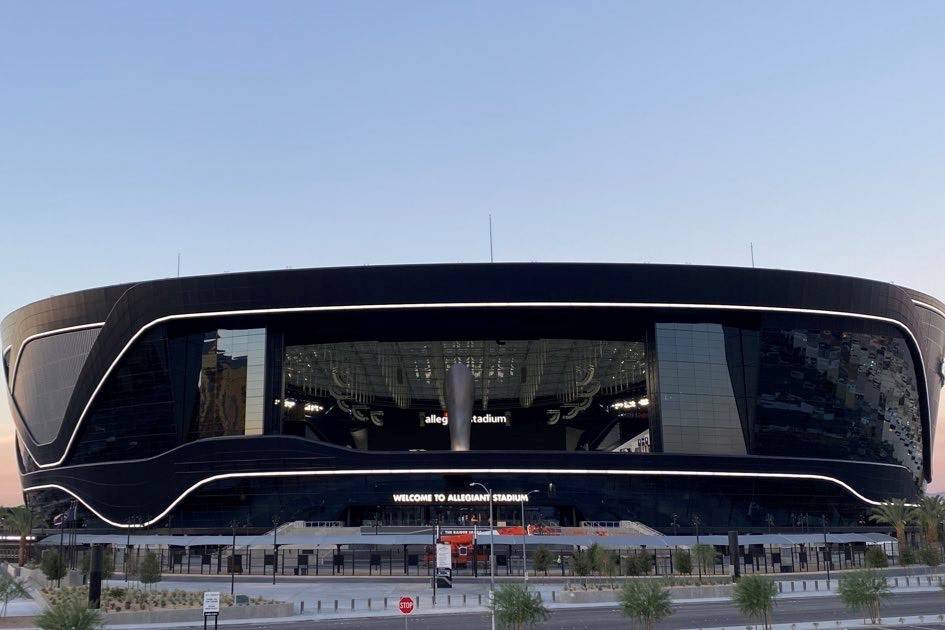Allegiant Stadium construction surpasses community benefit goals
Construction of Allegiant Stadium not only finished on time and on budget, it also met community benefit goals set by the legislation that allocated a $750 million public contribution to the project.
In all, 12,000 workers carried out work on Allegiant Stadium at some point during the project’s life. At its peak, 2,400 workers were on site on a given day, Lynn Littlejohn, a member of the Las Vegas Stadium Benefits Oversight Committee, said at a committee meeting Thursday.
The goal of having 15 percent Small Business Enterprise subcontractors on the project was exceeded with 23 percent of the work going to qualified subcontractors, according to Littlejohn.
Over 170 different SBE firms — 50 with multiple contracts — were awarded work on the project, representing $293 million of the $1.2 billion subcontracted work on the $2 billion project.
“I’m chomping at the bit here to say outstanding,” said Ken Evans, board chairman. “Outstanding effort, outstanding results.”
Forty-one women- and minority-owned companies were awarded work on the project, totaling $81 million, Littelohn said.
Out of the 900 total companies that were brought on to work on the stadium, 70 percent of those were Nevada-based.
“We knew it was important to ensure that it was the local business community who got the work,” Littlejohn said.
The workforce diversity goal was set at 28 percent, and that goal was easily met with 63 percent of the 6 million work hours going to women and minorities. Two percent of the work hours were tied to veterans, Littlejohn said.
Nevada-based workers carried out 80 percent of the work hours — approximately 4.8 million hours — according to Don Webb, chief operating officer of the Raiders construction subsidiary and a board member. Webb said the wages paid to those workers already justify the public money invested in the project by way of a 0.88 percent room tax on Clark County hotel rooms
“If we threw kind of an average number of $40 an hour … that means the public contribution of $750 million toward this project is already recouped by nearly one-half, just in the local wages that have been provided through this project,” Webb said, though the amount paid in wages is closer to a quarter of the public investment. “Not to mention the long-term benefits, the long-term community benefits of the ongoing operation of the stadium for the next 30, 40 or however many years.”
Contact Mick Akers at makers @reviewjournal.com or 702-387-2920. Follow @mickakers on Twitter.


















